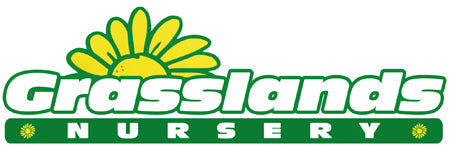Cornus kousa 'China Girl', commonly known as the Chinese Dogwood, is a stunning deciduous tree or large shrub that is prized for its striking white bracts, beautiful autumn foliage, and ornamental berries.
It has become a popular choice for UK gardens due to its year-round interest and manageable size. China Girl has a broad, vase-shaped growth habit when young, maturing into a more spreading, tiered form over time. Its branches elegantly spread out, giving the tree a layered appearance.
Grown for its Ornamental Appeal:
-
Showy Bracts: The large, creamy-white bracts are the tree’s standout feature, creating a beautiful and long-lasting floral display in late spring and early summer. Flowers attract pollinators, including bees and butterflies
-
Birds and Wildlife: The red, fleshy fruit is a valuable food source for birds and other wildlife in the late summer and autumn months.
-
Autumn Interest: In autumn, the leaves turn rich shades of red, burgundy, and purple, providing spectacular seasonal color, which contrasts beautifully with the red fruit.
-
Winter Interest: The tree’s attractive bark, which is often mottled and exfoliating, adds winter interest, especially when the tree is bare of leaves.
China Girl prefers well-drained, fertile soil that is slightly acidic to neutral. It can tolerate a range of soil types but does best in moist, organically rich soil, thrives in full sun to partial shade. While it can grow in partial shade, full sun will promote better flowering and fruiting. Once established, this tree requires minimal care. It is generally disease-resistant and does not suffer from many pests, making it a low-maintenance addition to the garden. A slow-release, balanced fertilizer applied in early spring can help support healthy growth, especially in poorer soils. Avoid over-fertilizing, as this can lead to excessive foliage growth at the expense of flowers
Guide to Planting Field-Grown Root Balled Plants
Pros:
- Established Roots: Typically stronger, established roots ensure better initial growth.
- Immediate Impact: Larger plants provide instant structure and aesthetics.
Cons:
- Heavy and Bulky: Can be difficult to transport and plant due to size and weight.
- Seasonal Availability: Generally available only in the dormant season (autumn to early spring).
Preparation for Planting:
- Unwrap Carefully: Remove any packaging material, but leave the burlap or wire basket on.
- Keep plants moist: Plants should be kept moist until the time of planting.
Planting Process:
- Dig a Hole: Make a hole twice the width of the root ball and the same depth.
- Position Plant: Place the root ball in the hole, ensuring the top is level with the ground surface.
- Do Not Remove Root Sack: Leave the burlap or wire basket around the root ball. It is bio degradable and will rot away naturally.
- Backfill: Fill the hole with soil, firming gently around the roots to eliminate air pockets.
- Water: Water deeply after planting to settle the soil and avoid wilting.
Possibility of Losses:
- Initial Shock: Some plants may suffer transplant shock, leading to potential losses.
- Mitigation: Proper care and consistent watering during the establishment phase can minimise this risk.
Main Causes of Failure:
- Improper Planting Depth: Planting too deep or too shallow can stress the roots.
- Poor Soil Conditions: Compacted or poorly drained soil can hinder root growth.
- Insufficient Watering: Both under-watering and over-watering can lead to plant stress and failure. Strong wind can dry leafy pants.
- Pest and Disease: Lack of protection and monitoring can result in damage from pests and diseases.
Tips for Success:
- Stake Larger Plants: Support with stakes to prevent wind damage.
- Mulch: Apply a layer of mulch around the base to retain moisture and regulate temperature.
- Regular Monitoring: Check for signs of stress, pests, and disease, and address them promptly.
By following these guidelines and providing consistent aftercare, you can successfully plant and establish field-grown root balled plants in your garden.
Does the height include the pot?
No, we measure from the top of the pot to the tip of the plant except for some of the instant planted screens, in this case it will be stated in the description
How long does delivery take?
Most orders are delivered in just a few days, Smaller items are often sent with Parcelforce on a next day service, Larger items should allow up to 10 days due to the size of the items they often have to be sent on our own transport.
Where will you leave my plants?
We will leave your order at the front of your property, Parcelforce may
leave your items in a safe place if you let us know, Pallet couriers
will require a flat hard surface to deliver to, no gravel or soil, a
driveway or parking spot would be best. Most importantly Deliveries by
pallet courier will require access for a large truck (bin lorry sized)
to get near the delivery point. Deliveries sent on our own transport may come in a small van or larger truck.


